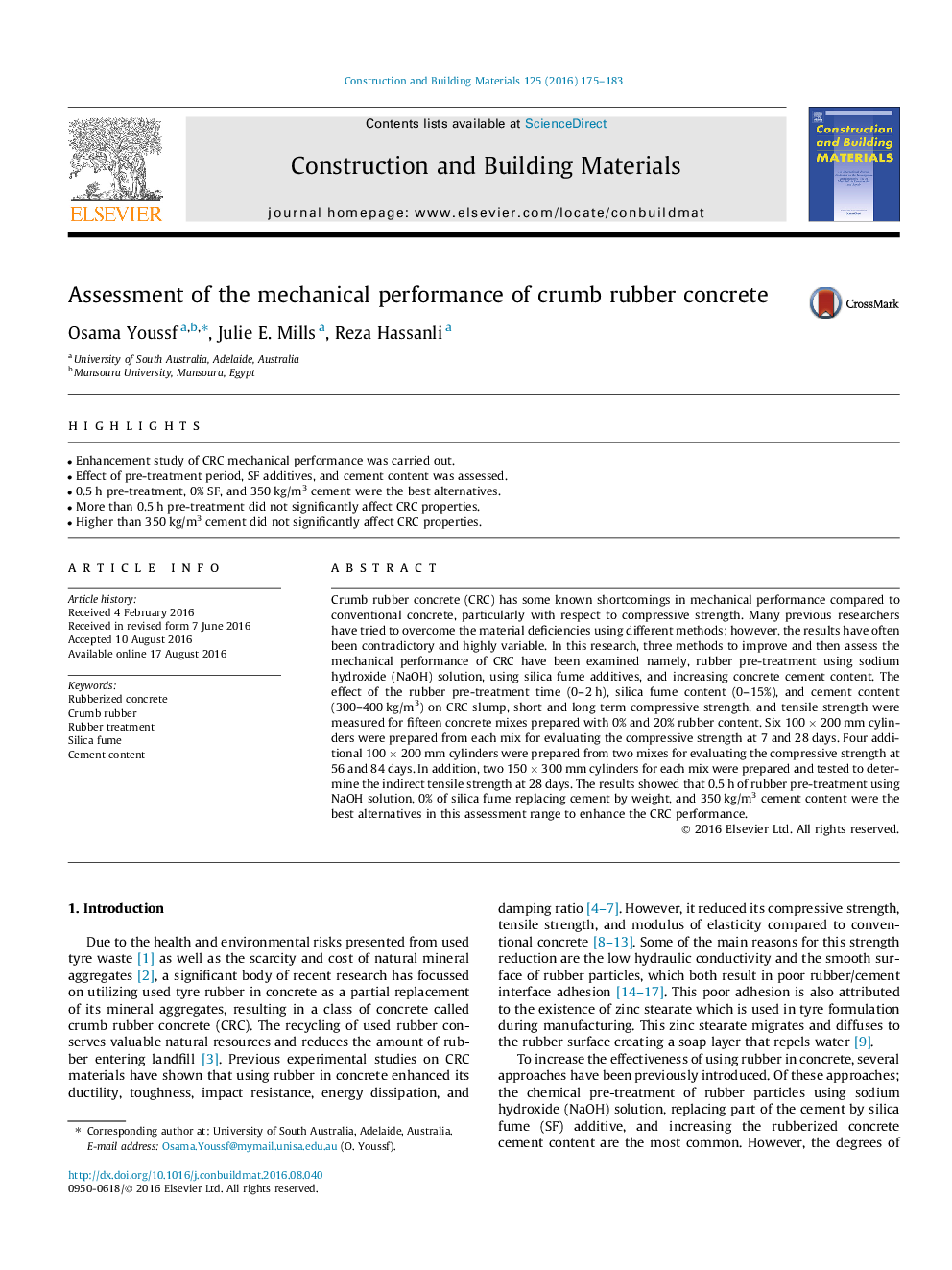| Article ID | Journal | Published Year | Pages | File Type |
|---|---|---|---|---|
| 4918608 | Construction and Building Materials | 2016 | 9 Pages |
Abstract
Crumb rubber concrete (CRC) has some known shortcomings in mechanical performance compared to conventional concrete, particularly with respect to compressive strength. Many previous researchers have tried to overcome the material deficiencies using different methods; however, the results have often been contradictory and highly variable. In this research, three methods to improve and then assess the mechanical performance of CRC have been examined namely, rubber pre-treatment using sodium hydroxide (NaOH) solution, using silica fume additives, and increasing concrete cement content. The effect of the rubber pre-treatment time (0-2Â h), silica fume content (0-15%), and cement content (300-400Â kg/m3) on CRC slump, short and long term compressive strength, and tensile strength were measured for fifteen concrete mixes prepared with 0% and 20% rubber content. Six 100Â ÃÂ 200Â mm cylinders were prepared from each mix for evaluating the compressive strength at 7 and 28Â days. Four additional 100Â ÃÂ 200Â mm cylinders were prepared from two mixes for evaluating the compressive strength at 56 and 84Â days. In addition, two 150Â ÃÂ 300Â mm cylinders for each mix were prepared and tested to determine the indirect tensile strength at 28Â days. The results showed that 0.5Â h of rubber pre-treatment using NaOH solution, 0% of silica fume replacing cement by weight, and 350Â kg/m3 cement content were the best alternatives in this assessment range to enhance the CRC performance.
Related Topics
Physical Sciences and Engineering
Engineering
Civil and Structural Engineering
Authors
Osama Youssf, Julie E. Mills, Reza Hassanli,
